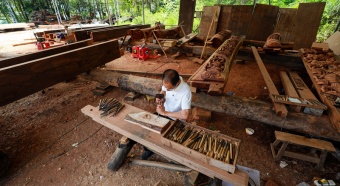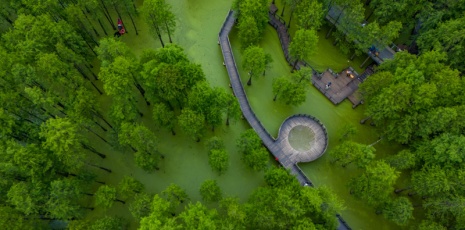After a journey of five years, Curiosity rover has begun its long-anticipated study of an iron-bearing ridge, informally named "Vera Rubin Ridge", forming a distinctive layer on the mountain's slope.
According to the U.S. National Aeronautics and Space Administration (NASA), Curiosity's science team said in its twitter on Wednesday that "I'm starting my investigation of hematite-bearing 'Vera Rubin Ridge' on #Mars."
Commemorating astronomer Vera Cooper Rubin (1928-2016), Curiosity's science team informally named the feature "Vera Rubin Ridge", which has been recognized as one of four unique terrains on lower Mount Sharp before Curiosity's landing five years ago and therefore a key mission destination.
According to NASA's Jet Propulsion Laboratory, Pasadena, California, the car-size NASA rover is now near the downhill face of the ridge, which forms an impressive wall for much of the ridge's length of about 6.5 kilometers.
"Our Vera Rubin Ridge campaign has begun," Curiosity Project Scientist Ashwin Vasavada said in a statement. "Curiosity is driving parallel to the ridge, below it, observing it from different angles as we work our way toward a safe route to the top of the ridge."
Vera Rubin Ridge stands about eight stories tall, with a trough behind it where clay minerals await. A major appeal of the ridge is an iron-oxide mineral, hematite, which can form under wet conditions and reveal information about ancient environments of the red planet, according to NASA.
Studies of Mount Sharp with the Compact Reconnaissance Imaging Spectrometer for Mars, on NASA's Mars Reconnaissance Orbiter, identified hematite in the ridge and also mapped water-related clay and sulfate minerals in layers just above it.
Curiosity landed near Mount Sharp in the Gale Crater in August 2012 and reached the base of the mountain in 2014. It has since traversed through a diversity of environments where both water and wind have left their imprint.
The rover began to drive toward uphill destinations on Mount Sharp since its second two-year mission extension commenced on Oct. 1, 2016. The upcoming exploration provides opportunities to learn even more about the history and habitability of ancient Mars.









